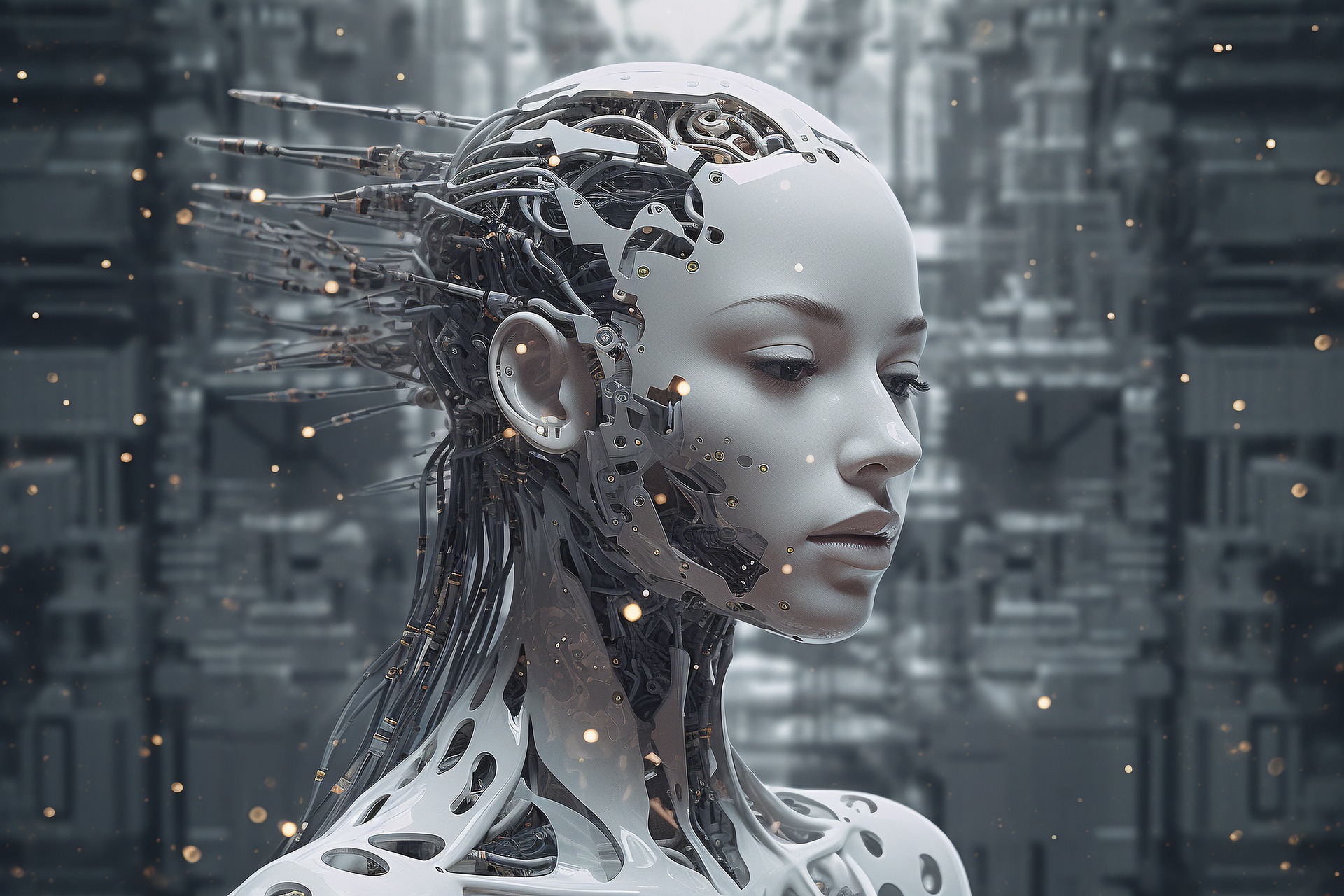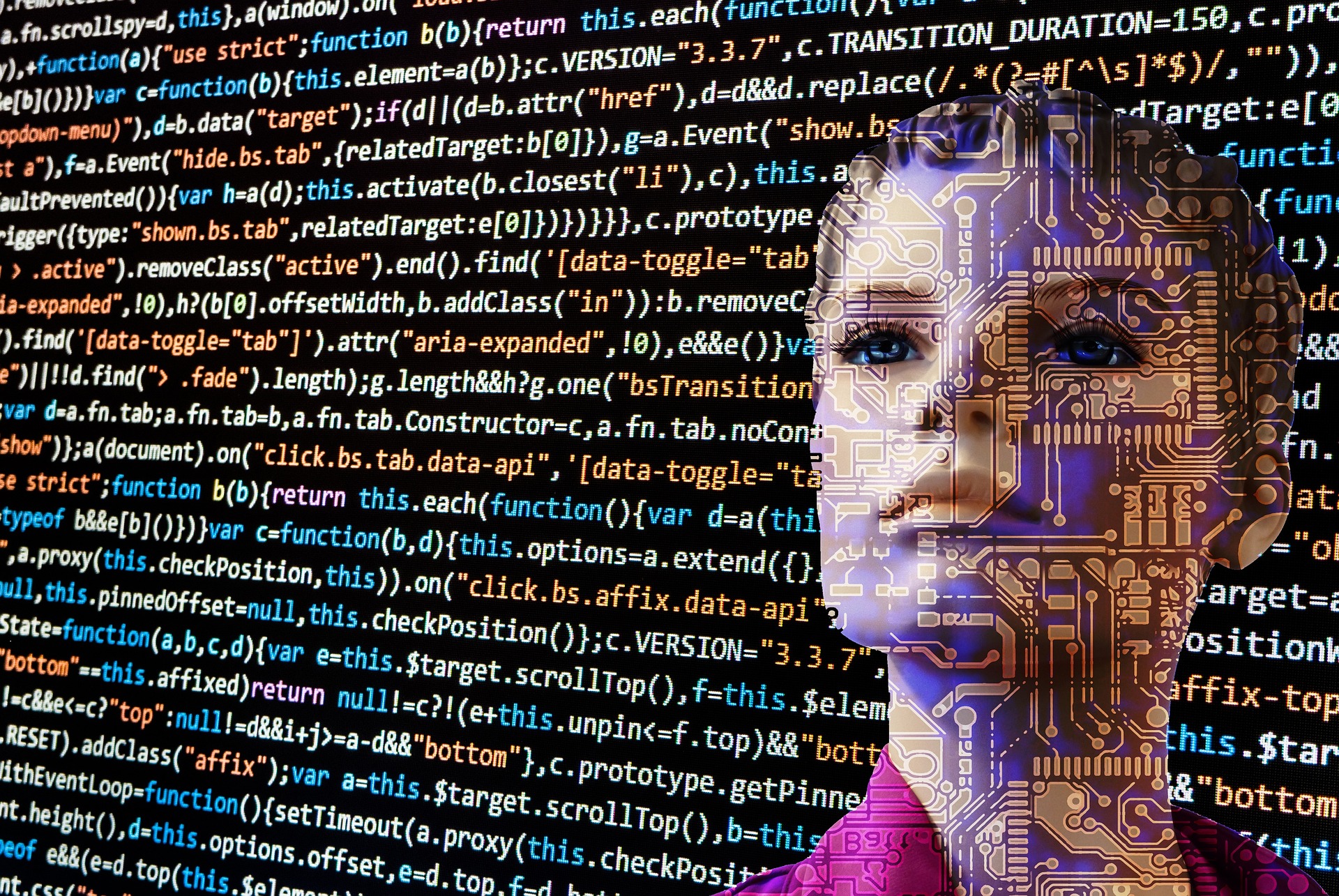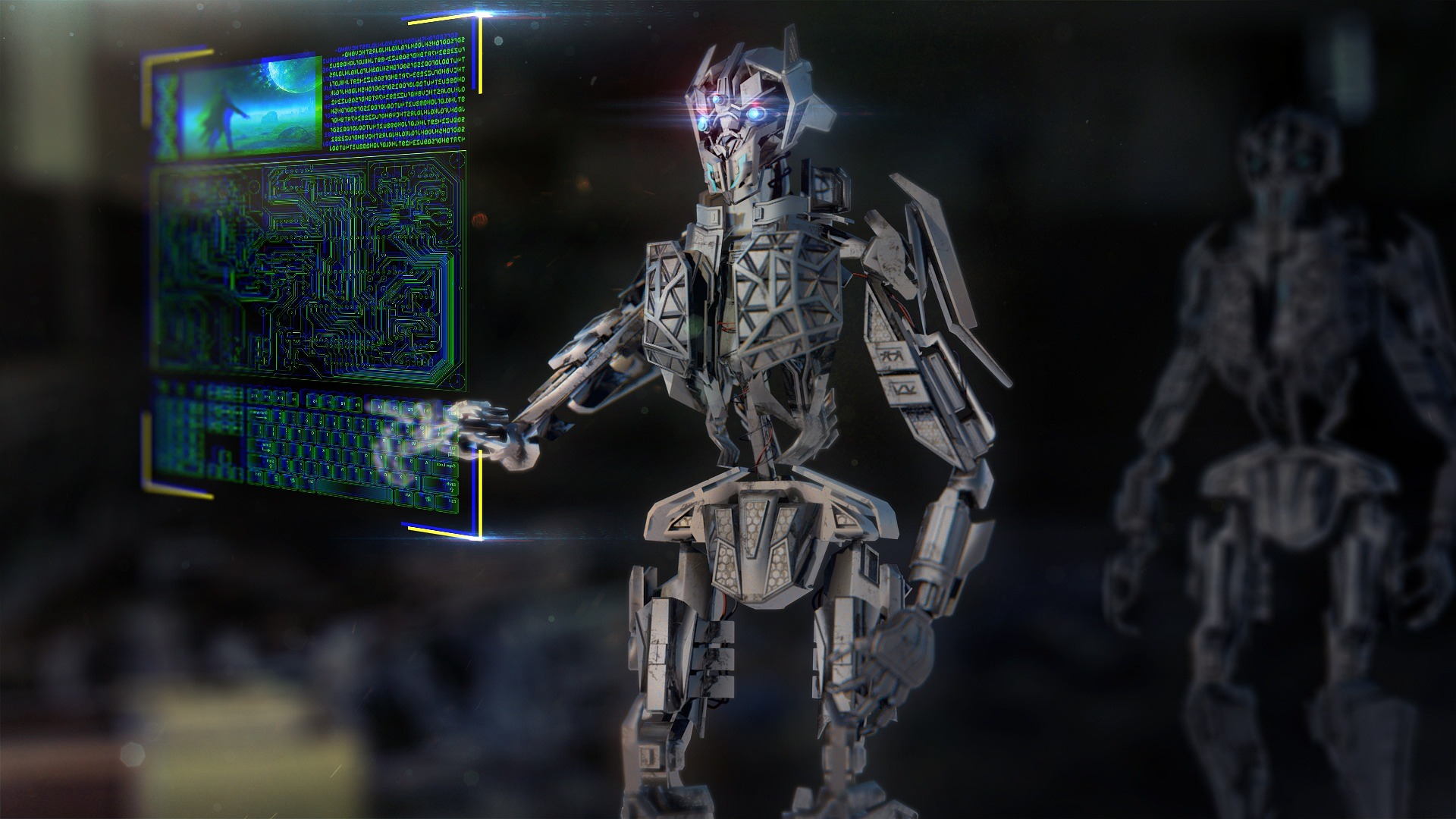Top AI Trend in 2023

Creative or Generative AI
Generative AI refers to the sub-field of machine learning that generates new data or content using an existing dataset. Its objective is to produce something similar to the original, real-world input data. This AI type utilizes deep learning algorithms to identify patterns and features in various types of data, including code, text, images, audio, video, and more. Generative AI has found numerous applications, and here are three notable examples developed by OpenAI, an AI research firm based in San Francisco:
Generative Pre-trained Transformer 3 (GPT-3)
GPT-3, developed in 2020, is a language prediction model with 175 billion machine learning parameters. It “autocompletes” text based on its analysis of millions of web pages and scientific papers. With GPT-3, users can generate human-like written content by providing contexts such as topics, descriptions, or introductory sentences. This tool is commonly used for creating outlines, summaries, essays, op-eds, and more.
However, it is important to note that GPT-3 may produce biased outputs since its content is derived from pre-existing publications that can contain racial, religious, or gender biases.
ChatGPT

ChatGPT is a bot version of GPT-3 that was introduced in November 2022. It is a large language model capable of answering questions and executing instructions by learning from human conversations and internet content. By analyzing feedback sources like Reddit, this AI model has learned to respond in a manner similar to humans, mimicking conversational dialogues.
OpenAI designed ChatGPT to serve as an office assistant and customer service support, as it can create lists and compose human-like responses.
However, concerns have been raised about the potential misuse of ChatGPT for generating essays and academic papers. The generated content may contain nonsensical sentences or inaccurate information. Consequently, it may be necessary to conduct regular audits to ensure accurate information in customer care settings.
DALL-E
DALL-E gained significant popularity among the three OpenAI creations in 2022 due to its graphic generation capabilities. The name of this product is a combination of Salvador Dali, the Spanish surrealist artist, and WALL-E, the robot character from Pixar’s 2008 animated film.
With DALL-E, users can create art by providing textual descriptions, and the AI system generates multiple versions accordingly. It is also possible to generate new images based on existing ones using text prompts. DALL-E enables users to perform “in-painting” by replacing parts of an image or “out-painting” by adding more elements to the original photo, such as the main subject or scenery. These features make DALL-E a valuable tool in the branding and creative marketing sectors.
OpenAI has implemented policies to prevent DALL-E from generating “violent, adult, or hate images.” However, similar to GPT-3, DALL-E is not immune to bias. Reports indicate that DALL-E generated images of Caucasian men when prompted with “the CEO.”
More users are expected to utilize DALL-E for creating animated art, particularly human-like images combined with AI-generated voice using text-to-video platforms.
Other market leaders, such as Amazon and Microsoft, have also developed AI tools. Amazon’s text-to-speech tool, Polly, generates speaking voices for brands, while their DeepComposer expands short melodies into complete songs. Microsoft’s GitHub offers CodeAssist, an AI-powered tool that assists developers in creating new software faster by automatically completing code snippets.
AI-human collaboration

The extent of AI’s support for various human functions has reached new heights, earning them the name cobots or collaborative robots. Market insiders anticipate that more companies will deploy machines with built-in AI to perform repeated and physically strenuous tasks. This will allow human staff to focus on more specialized duties. AI features can also facilitate teams in promptly detecting and responding to defects or failures, thereby improving safety and reducing costs for repairs or injuries.
Cobots are expected to become more widespread in the following fields:
1. Automotive manufacturing: car assembly, spray painting, surface polishing, systems checking, and retrofitting or reconstructing car production lines to accommodate electric models. Companies engaged in palletizing and welding activities are expected to adopt more cobots with higher payloads and a longer reach.
2. Agriculture: drones for seed planting, fertilizer and pesticide application, trespasser and invasive species tracking, and LED lighting and hydroponics for indoor farms.
3. Healthcare and hospitality: sample collection, hospital supplies restocking, surgery, injury recovery, and health worker support in residential and nursing care homes for the elderly or disabled.
4. Food and beverage: warehousing, food packaging.
5. Electronics: quality inspection for phone chips, phone chip processors, and printed circuit boards.
6. Emerging technologies: torque sensors, proximity detection sensors, end-effectors (end-of-the-arm tooling such as vacuum, mechanical, pneumatic, and magnetic grippers).
7. Defense: clearing roads of explosive devices, sensors to detect explosives.
Companies can also rely on these machines to address labor shortages and supply chain issues. The healthcare, construction, and defense industries, in particular, may adopt VR and AR-based learning methods to enhance safety and reduce costs, replacing traditional training approaches.
Low-code, No-code AI

The trend of low-code, no-code development in website and app development is expected to extend to AI, enabling organizations to customize intelligent systems through pre-built templates and drag-and-drop methods. This will facilitate faster integration of AI into existing workflows and promote quicker scalability within corporate setups.
Low-code, no-code AI can be utilized to automate repetitive tasks such as invoicing, form filling, and contact validation. Additionally, businesses can program AI tools like Sway AI and Akkio for data analysis of current processes and visualization of future performance.
The AI market is likely to witness more cloud service providers integrating AI into their offerings due to its anticipated long-term adoption.
Given that IT modernization using low-code, no-code tools is significantly more cost-effective (about 70% cheaper) and faster (as short as three days) compared to traditional methods, a substantial number of developers (66%) are already using (39%) or planning to use (27%) such tools in 2023. Furthermore, Gartner has forecasted that by 2026, approximately 80% of low-code tool development users will be “citizen developers,” individuals without formal coding training.
Sophisticated cybersecurity

AI presents a concerning aspect in the realm of cybersecurity. Hackers can exploit AI and its capabilities to significantly reduce the time it takes to execute their attacks, as stated in a McKinsey report.
With the increasing adoption of AI across various industries, critical infrastructure, such as national civil infrastructure responsible for power and water supply to homes, faces a heightened risk of hacking activities. Simultaneously, smaller and less protected organizations remain susceptible to such threats.
These new risks create career opportunities in information security. Experts in the field can utilize security AI for:
1. Data handling, involves tasks like classification, cataloging, integration, and quality control.
2. Vulnerability management, which entails monitoring network traffic and identifying patterns indicative of criminal behavior.
3. Threat detection through predictive AI, enabling prioritization of the most high-risk alerts for immediate action.
According to IBM’s 2022 report, businesses with well-established cyber risk management structures and policies were able to save an average of USD 3 million and reduce breach lifecycles by 74 days by promptly detecting and responding to incidents.
The escalating cyber threats may also drive the insurance market to adopt innovative technologies and strategies for assessing and managing cyber risks. Insurers might introduce risk-based pricing and exemption clauses to address the challenges posed by ransomware and cyberattacks.
Artificial Intelligence in medicine
Precision medicine: With the optimization of electronic health records by AI, medical professionals are able to provide targeted diagnostics, develop personalized drugs for patients, and create customized treatment plans. The integration of AI into diagnostics can significantly reduce the annual incidence of harm experienced by one in four patients due to hospital negligence or oversight.
Virtual exams and decentralized clinical trials: The capabilities of telehealth will be expanded to include remote physical examinations through the use of smartphone solutions and wearables. This advancement enables research institutions and pharmaceutical companies to utilize these devices for conducting clinical trials, eliminating the need for participants to travel to trial sites to complete surveys and assessments.
Emotional AI technology: AI equipped with emotion recognition and generation capabilities has the potential to engage individuals such as autistic children, patients with depression, and those with degenerative ailments like dementia.
Artificial Digital twinning
Digital twinning is a process in which industries create virtual models of objects or processes in the physical world. Through the use of AI, these virtual models allow for simulations that can predict the performance of a product or system.
NVIDIA’s Omniverse platform exemplifies digital twin technology and its application in various companies:
1. BMW:
Germany’s BMW Group utilizes Omniverse as its virtual factory. By integrating data from different design and planning tools, the platform generates real-time, photo-realistic simulations. This virtual space enables staff from different locations and time zones to collaboratively plan and optimize production processes without the need for physical travel. Omniverse simulates all 31 of BMW’s factories, including elements such as human associates, factory interiors, assembly parts, and robots.
2. Lowe’s:
American retailer Lowe’s Companies Inc. employs Omniverse to simulate two of its stores: one in Washington (Mill Creek) and another in North Carolina (Charlotte). Personnel can access these simulated outlets using desktop computers or Magic Leap 2 augmented reality headsets. The Omniverse version of the store facilitates tasks like restocking shelves, reconfiguring layouts, accessing product information from closed boxes on hard-to-reach shelves through “X-ray vision,” and optimizing the customer experience using 3D heat maps to analyze customer traffic and sales performance.
3. HEAVY.AI (formerly OmniSci):
Omniverse empowers HEAVY.AI, an analytics company, to leverage its HeavyRF tool for designing wireless network plans for telco clients. Through AI-driven simulations of real-world environments, the tool identifies customer locations and obstructions, including their material composition. This information helps telcos determine optimal locations for cellular towers and base stations in their 5G infrastructure, reducing costs associated with site deployment and planning cycles.
Other applications of digital twinning include the creation of digital twin cities. For instance, the Shanghai Urban Operations and Management Center has developed a digital clone of the city, encompassing water bodies, airports, ports, and other establishments.
Although initially limited to high-value use cases, efforts by tech firms like Amazon (through TwinMaker) and Prevu3D aim to make digital twin technology more accessible and affordable, even for smaller companies.
Artificial Intelligence for personalization
eCommerce: Although 62% of consumers expressed concerns about AI bias, a Salesforce poll revealed that 69% of respondents are receptive to brands using AI if it enhances their shopping experience. The widespread use of AI-powered chatbots, with 91% of consumers already interacting with them, indicates that this trend will continue. AI marketing tools enable brands to analyze customer interactions and personalize product searches, recommendations, and messages.
Entertainment: The film industry is increasingly relying on AI, as movie companies utilize audience analysis tools to identify compelling stories for their upcoming releases. In 2022, Screenvision Media introduced its proprietary Cinelytics to advertisers, while Warner Bros. had previously adopted a similar technology to predict ticket sales. As early as 2018, 20th Century Fox collaborated with Google’s Advanced Solutions Lab to develop Merlin Video, which employed AI to forecast viewer interest based on the analysis of movie trailers. Netflix also employs AI, leveraging subscribers’ watch histories to provide personalized recommendations.
Workplace: Employers have concerns about AI bias, but market experts predict that AI tools will continue to enhance engagement through team communication software (such as Glint and Leena.AI) and workplace learning platforms (such as Hone and EdApp). PwC reports that 54% of executives in AI-utilizing companies observe improvements in employee productivity, while 80% believe automation will be beneficial in making business decisions.
Artificial Intelligence in voice technology
Voice authentication, also known as voice biometrics, is gaining popularity among businesses as a secure method for identity verification. Instead of relying on passwords or PINs, voice assistants create a unique “voiceprint” from a recorded sample of your voice. This voiceprint is used to compare any new voice input when you unlock your device through speech. Many banks are now adopting voice recognition technology, allowing customers to access their accounts through speech authentication.
Voice cloning
AI technology enables the generation of new audio by using a person’s voice sample. This advancement has accelerated the process of creating voice-overs for various projects, including films, video games, and more. One notable platform called My Legacy Voice, developed by VoCapsule, offers a “voice bank” where members can preserve their voice data. This is especially useful for individuals who may experience speech difficulties in the future. Additionally, designated “primary recipients” can access the data once the original member has passed away.
Voice cloning also has applications in content localization. Companies can utilize this technology to provide promotions or instructions in different languages, allowing individuals to hear content in their native tongue. In the realm of filmmaking, voice cloning can be used to manipulate an actor’s voice to speak different languages. The process involves extracting elements from the actor’s original recording and merging them with a secondary track that contains an interpreter or a voice talent’s speech. This technique preserves the accent and vocal performance of the translated voice.
Artificial Intelligence in Automotive
The automotive industry anticipates a wider adoption of AI-based driver monitoring systems, which can notify human drivers or activate autonomous driving modes if they detect signs of drowsiness or illness. Furthermore, adaptive cruise controls have the capability to issue forward collision warnings and automatically adjust the vehicle’s speed.
Additionally, automakers perceive automation, rather than electrification, as the future of driving. According to Renub Research, the autonomous vehicle market is projected to experience exponential growth, reaching $186.4 billion by 2030, compared to $4 billion in 2021.
The development of autonomous vehicle technology continues to progress. This includes the integration of sensors and radars for object detection, as well as the utilization of convolutional neural networks. These networks enable the recognition and classification of various types of terrain, paving the way for effective path planning, route optimization, and ultimately, the “training” of self-driving cars to operate safely. Moreover, there is a rise in the emergence of vehicle connectivity solutions that enable autonomous cars to “communicate” with each other, pedestrians, and other objects, thereby avoiding potential collisions.

